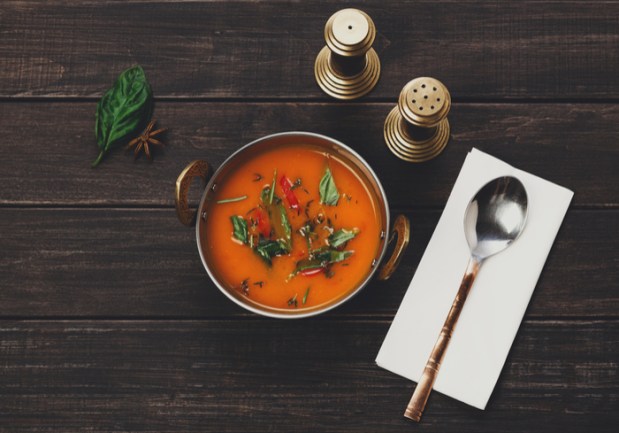How Food Packet Startups Are Going ‘Microwave 2.0’ For Authentic Meals

Startups are often founded out of personal need, and those that specialize in hard-to-find authentic cuisines are no exception. The Buttermilk Company was started after its founder, Mitra Raman, missed her mom’s cooking. Raman noted that it was hard to find good Indian food that wasn’t heavy or unhealthy — and she didn’t know how to make the dishes on her own.
She decided to go to her mom and ask her to give her a ton of rasam, which isn’t found in most restaurants. The South Indian dish is a tamarind-based tomato soup, which is usually mixed with rice and has a bit of a tangy flavor. “It’s the best option for when you just want something warm and homey, or you have a cold and you need a nice soup to clear you up,” Raman told PYMNTS.com in an interview, adding that it is her comfort food.
In Raman’s case, her mom gave her all the ingredients for the dish and told her that she could make the dish when she wanted. Raman’s company, however, prepares the food ahead of time and customers can make it ready to eat with hot water. In other words, she is essentially replacing microwave meals with a fresher and healthier alternative. “We’re kind of the microwave 2.0,” Raman said.
Raman said her company makes the product from scratch like a person cooking in her own kitchen. That is, the company uses fresh vegetables, spices, and seasoning when it prepares the packets multiple times a week in its Seattle kitchen. She also noted that the product doesn’t contain preservatives and it is not dehydrated (as the latter process can rid the product of nutrients and impact taste.)
The Logistics
To purchase her products, consumers can choose from 11 different individual items such as daal, khichdi, and, of course, rasam. Raman also decided to bundle multiple products together in combination packs. Those include an “Out Of Office” pack, which she said is good for travel as it’s easy to microwave or make with a hot kettle. She also offers an “I Can’t Do Spicy Food” pack that provides dishes that have less of a kick but still give customers a taste of the cuisine.
At checkout, Raman accepts credit cards along with PayPal, Amazon Pay and Google Pay. Then, after a customer places an order, her company places them in a thermal mailer with recyclable ice packs to ensure fresh delivery, and ships them across the country using USPS. And, once the items arrive, Raman noted that consumers can store them in their refrigerator or freezers — and add hot water to her products when they desire.
Raman compared her product to granola bars — products that consumers might want to have available and ready to eat. “You don’t want to eat them every day for breakfast, but you want to know you have that in case you need a quick option that you like,” Raman said of granola bars. Consumers who want to have the packets handy — like granola bars — can opt for a one- to four-month subscription and receive a discount. Alternatively, Raman offers the packets on a la carte one-time basis.
The Target Market
When it comes to her target market, Raman originally thought it would be people like her who grew up with Indian food and have cravings for authentic dishes. But Raman lately found new markets for her products. She discovered, for instance, that she has a market in consumers who are strained for time. These consumers might have a family and need to quickly get dinner on the table. In other cases, she found that the product was well suited for college and graduate students. Those consumers don’t have access to a great kitchen all the time — and alternatives such as takeout can be expensive (and unhealthy.)
To find the recipes to use in her dishes, Raman turns to crowdsourcing. After starting the company with her mom’s rasam, she realized that people all over the country and the world have great recipes for authentic food. As a result, Raman noted that anyone can submit a recipe that her company might end up using. If the dish becomes a Buttermilk product, she said she gives a percentage back to the recipe creator — she calls that person a curator — for the products sold. The reason is to bring authenticity to the product, which can be hard to do if a startup brings in a chef or a recipe in house to fill the need for hard-to-find cuisines.
